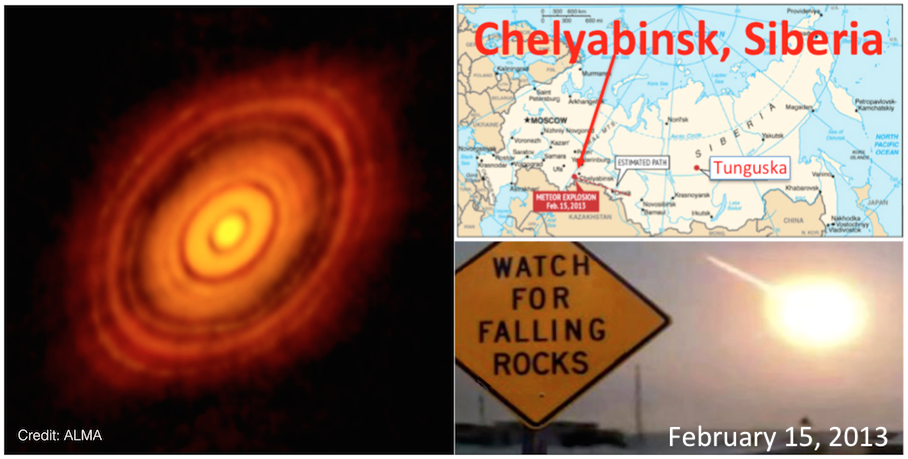 |
|
Astrophysical and Planetary Sciences Colloquium
Monday, December 07, 2015 at 4:00 JILA X317/X325 Rick Binzel, MIT "Falling Asteroids: Science Treasures or Human Threat?"  Abstract:Hazards posed by asteroids always seem to grab the headlines, but the real story is how asteroids and meteorites are true scientific treasures for uncovering the processes of planetary formation. In this talk we will meet head-on how the media treats the “threat†from asteroid impacts and alternatively present a formal risk assessment, forming the basis for establishing a sensible approach for future telescopic, robotic, and human exploration of asteroids. Relating meteorites and asteroids to planetary formation processes has always been dependent on divining the source locations for meteorite samples. Solving these cases reads like a detective story where the clues are fit together from laboratory measurements, from telescopic measurements, and from the orbital trails toward Earth suggested by dynamical models. Progress has been made in relating asteroid/meteorite compositions by seeing through “asteroids in disguise†arising from their surface spectral properties being altered by “space weathering†processes related both to impacts and solar wind bombardment. The Earth itself has helped shake out some of these answers by distorting and refreshing the surfaces of asteroids making close encounters within a few planetary radii. The outcome from more than a decade of sleuthing is that specific classes of falling meteorites are now traceable with confidence to specific regions of the asteroid belt, ranging from the inner edge closest to Mars to possible connections with Jupiter family comets. Linking samples to specific locations provides pressure, temperature, chemistry boundary conditions for the early solar system.
|